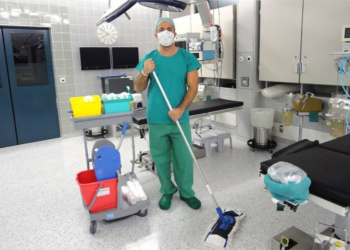Prostate enlargement, also known as benign prostatic hyperplasia (BPH), is a common condition that affects many men as they age. It occurs when the prostate gland, responsible for producing semen, grows in size and puts pressure on the urethra, leading to various urinary symptoms. While BPH can be bothersome, several reliable ways exist to treat and manage this condition. This article will explore How to Cure Prostate Enlargement.
- Medications
Medications are often the first line of treatment for prostate enlargement. There are two primary types of drugs used: alpha-blockers and 5-alpha-reductase inhibitors.
Alpha-blockers, such as tamsulosin and terazosin, relax the prostate and bladder neck muscles, thereby improving urine flow and reducing symptoms like frequent urination and weak urine stream. These medications provide quick relief and are generally well-tolerated.
On the other hand, 5-alpha-reductase inhibitors, such as finasteride and dutasteride, work by shrinking the prostate gland over time. They block the conversion of testosterone to dihydrotestosterone (DHT), a hormone that contributes to prostate growth. Although these medications may take several months to show noticeable effects, they can significantly reduce the size of the prostate and alleviate symptoms in the long term.
- Minimally Invasive Procedures
For men who do not respond well to medications or have more severe symptoms, minimally invasive procedures can be highly effective in treating prostate enlargement. These procedures aim to remove or reduce excess prostate tissue, relieving urinary obstruction. Some common minimally invasive procedures include:
- a) Transurethral Microwave Thermotherapy (TUMT): In TUMT, microwave energy is delivered through a catheter to heat and destroy the excess prostate tissue. This procedure is performed on an outpatient basis and requires little to no anesthesia.
- b) Transurethral Needle Ablation (TUNA): TUNA involves inserting needles into the prostate tissue and using low-level radiofrequency energy to heat and destroy the excess cells. Like TUMT, this procedure can be performed in an outpatient setting.
- c) Laser Therapy: Several laser-based treatments, such as photo selective vaporization of the prostate (PVP) and holmium laser enucleation of the prostate (HoLEP), use laser energy to remove or vaporize excess prostate tissue precisely. These procedures are associated with minimal bleeding and quicker recovery times than traditional surgery.
- Prostatic Artery Embolization (Pae)
Prostatic artery embolization (PAE) is a relatively new and promising treatment for prostate enlargement. It is a non-surgical procedure in which tiny particles are injected into the arteries supplying blood to the prostate gland. These particles block the blood flow, leading to shrinkage of the prostate. PAE has shown excellent results in reducing urinary symptoms and improving quality of life, with minimal side effects and a short recovery period.
- Surgery
Surgery is typically reserved for men with very large prostates or those who have not responded to other treatments. The most common surgical procedure for prostate enlargement is transurethral resection of the prostate (TURP). During TURP, a surgeon removes the excess prostate tissue using a resectoscope inserted through the urethra. This procedure has a high success rate in relieving urinary symptoms but requires a longer hospital stay and recovery time compared to less invasive options.
- Lifestyle Changes
In addition to medical interventions, certain lifestyle modifications can help manage prostate enlargement and alleviate symptoms:
- a) Urinate regularly: Avoid holding urine for long periods and empty your bladder when you urinate.
- b) Limit fluid intake before bedtime: Reduce the amount of fluid you consume in the evening to minimize nighttime urination.
- c) Avoid caffeine and alcohol: These substances can irritate the bladder and worsen urinary symptoms.
- d) Stay active: Engage in regular physical activity to maintain overall health and promote urinary function.
- e) Maintain a healthy diet: Incorporate a balanced diet rich in fruits, vegetables, whole grains, and lean proteins to support prostate health.
- f) Manage stress: Stress can exacerbate urinary symptoms, so finding effective stress management techniques like meditation or exercise can be beneficial.
Conclusion
Prostate enlargement is a common condition that can significantly impact a man’s quality of life. Fortunately, there are several reliable ways to treat and manage this condition. Medications, minimally invasive procedures, prostatic artery embolization, surgery, and lifestyle changes are vital in addressing prostate enlargement and alleviating urinary symptoms. It is important to consult with a healthcare professional to determine the most suitable treatment approach based on the severity of your condition. With the right interventions, men can find relief and regain control over their urinary health.





